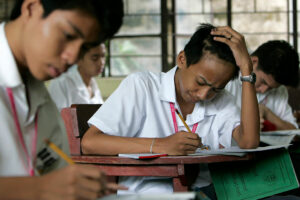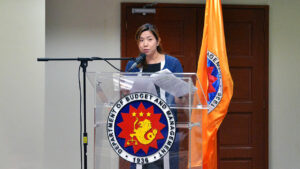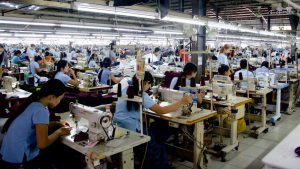By John Victor D. Ordoñez, Reporter
THE PHILIPPINE government should boost spending on its public education system, arts and technology, as well as improve on-the-job training programs for students after a global study found Filipino students among the worst in the world in creative thinking, according to economists and education experts.
In a study by the Organization for Economic Cooperation and Development (OECD), the Philippines ranked 63rd out of 64 countries in a 2022 global assessment that ranked 15-year-old students worldwide in producing and evaluating original ideas that would translate into effective solutions.
“It is time to seriously consider a comprehensive financial reform program in the whole education sector towards one that places a premium on foundational basic education and redistributes more funds to poor regions that sorely need to enhance education quality,” Leonardo A. Lanzona, who teaches economics at the Ateneo de Manila University, said in a Facebook Messenger chat.
“Since learning is cumulative, this fundamental weakness in education will make our workers unproductive and unskilled, thus reducing our chances of reaching upper middle-income status.”
The government of President Ferdinand R. Marcos, Jr. is aiming for the Philippines to reach upper middle-income status by 2025. The Philippines is currently classified as a lower middle-income country.
IBON Foundation Executive Director Jose Enrique “Sonny” A. Africa said the government should invest more in arts and culture, science, and technology to spur creative thinking in Filipino students.
“Creativity is both cause and effect of a progressive society and the state has a key role in fostering or suppressing this,” he said in a Viber message. ‘Our education system has to be at the forefront of pushing for all the factors needed for creativity, innovation and development.”
Filipino students got an average score of 14 on creative thinking, according to the 2022 Programme on International Student Assessment (PISA) Volume III. The Philippine score was way below the global average of 33, and only better than Albania which had a score of 13.
Singapore topped the list getting a score of 41, with South Korea and Canada trailing with a score of 38.
Maria Ella Calaor-Oplas, an economics professor who specializes in human capital development research at De La Salle University, said developing on-the-job training programs that focus on innovation and critical thinking would better prepare students to enter the workforce.
“I believe that we still confine education in a box. Our education should take into consideration that children have different gifts and that they should not be assessed according to common standards,” she said in a Facebook Messenger chat.
“We see education as something that can be assessed using exams, recitation, and other factors taken inside the classrooms.”
In the PISA’s 2022 assessment for student performance in mathematics, reading and science, Filipino students were among the world’s weakest in those subjects, ranking 77th out of 81 countries and performing worse than the global average in all categories.
On the other hand, the Philippines placed 22nd out of 111 countries in the 2022 English Proficiency Index by Education First.
Terry L. Ridon, a public investment analyst and convenor of the think tank InfraWatch PH, said the government must conduct a comprehensive review of the basic education system to address these learning gaps.
“It will take more than significant spending to improve our results,” he said in a Facebook Messenger chat. Government should continue to review its basic education curriculum and work on how to improve results.”
Senator Aquilino Martin D. Pimentel III earlier this month called on the government to upgrade teacher education training institutions to increase its pool of licensed teachers and raise the quality of education.
The government had allocated P924.7 billion for education in this year’s P5.768-trillion national budget, with the Department of Education receiving P758.6 billion. Under the Constitution, the government must prioritize funding the education sector.
The Second Congressional Commission on Education (EDCOM II) is prioritizing the internationalization of higher education and improving research productivity this year, EDCOM II Executive Director Karol Mark R. Yee told a Senate hearing in February.
EDCOM II and the Philippine Institute for Development Studies said in a report in May that there is a “severe underinvestment” in the welfare of very young children in the Philippines, causing their early education to suffer.
The government only spends about P3,870 per child for health, compared with the $150 (P8,809.95) that other lower and middle-income countries spend on children’s health, the report showed.





